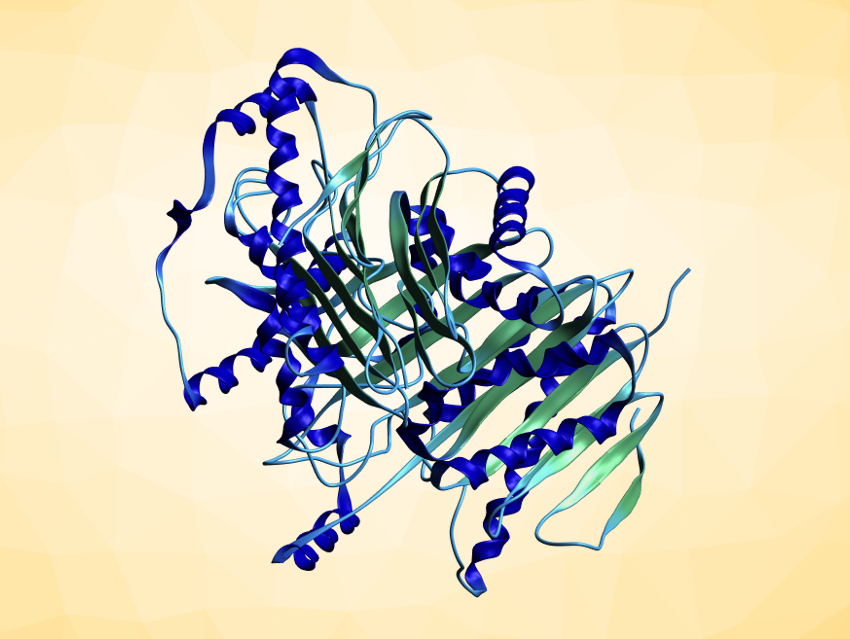Enzymes are proteins that can catalyze a broad variety of chemical reactions. They can be immobilized to make handling easier and used in applications such as organic synthesis, biotechnology, or sensors. Enzymes have been immobilized on nanoparticles, nanofibers, or surfaces, as well as encapsulated in 3D matrices. Gold has often been used to immobilize enzymes, but usually via adsorption or chemical binding of the enzyme to the metal surface, not as an encapsulating matrix.
Yael Baruch-Shpiglera and David Avnir, The Hebrew University of Jerusalem, Israel, have immobilized different enzymes within porous bulk gold. In this configuration, the enzyme is surrounded by metal, while remaining accessible for the substrates by diffusion. The team immobilized five enzymes that are commonly use din different applications: L-asparaginase (Asp, pictured), collagenase, horseradish peroxidase (HRP), laccase, and glucose oxidase (GOx). The enzymes were added to a buffered solution of sodium tetrachloroaurate(III), and zinc granules were used as a reducing agent to create the gold matrix and trap the enzymes. The conditions and buffers were tuned to avoid denaturing the enzyme and ensure the formation of the desired gold matrix structure.
The team found that substrates and products can move through the porous network and the enzymes remain catalytically active—at slightly lower levels than in their free form. However, the enzymes are more stable in their immobilized form, both under higher temperatures and at extreme pH values. They can also be easily reused.
- Enzymes in a golden cage,
Yael Baruch-Shpigler, David Avnir,
Chem. Sci. 2020.
https://doi.org/10.1039/c9sc05419g




